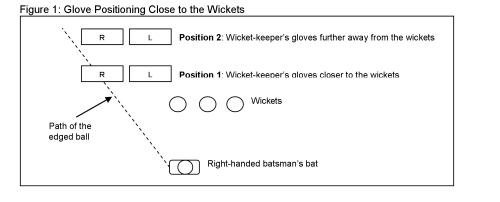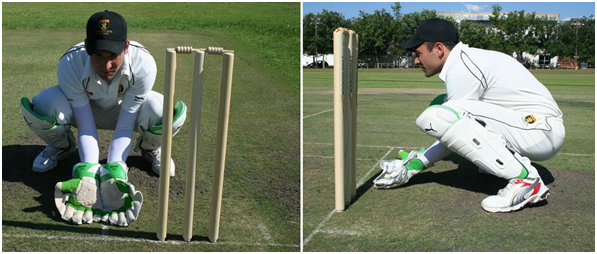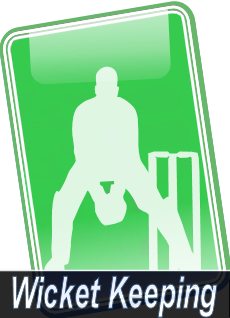Wicket-keeping tips: Positioning when standing up
 This guest article by first-class and international 'keeper Nic Northcote is an extract from his new book "Wicket-Keeping: The Ultimate Guide to Mastering the Art": Available now on PitchVision Academy.
This guest article by first-class and international 'keeper Nic Northcote is an extract from his new book "Wicket-Keeping: The Ultimate Guide to Mastering the Art": Available now on PitchVision Academy.
Standing up to the wickets is the most difficult element of wicket-keeping to master and is an area where great keepers are distinguished from good ones. With the evolution of the modern game towards shorter formats and more aggressive batting, wicket-keepers are expected to effectively be able to stand up to the wickets in order to prevent the batsman from being able to advance down the pitch.
When standing up, the wicket-keeper must attempt to get his body and gloves as close to the wickets as possible for the following reasons:
- It reduces the time required to make a stumping as the keeper has to move his gloves a shorter distance to the wickets; and
- When standing up to the wickets, the keeper rarely has enough time to move his gloves to catch a ball edged by the batsman. Therefore, by keeping his gloves as close to the wickets as possible, the keeper is able to reduce the distance between the batsman’s bat and his gloves, and the angle of any deflection / deviation caused as a result of the batsman edging the ball is also effectively reduced. This gives the wicket-keeper the best possible chance of being able to take the catch. The schematic in Figure 1 illustrates how this principle works. A wicket-keeper with his gloves in Position 1 will manage to catch a ball edged by the batsman that he would not have been able to catch if his gloves were further away from the wickets in Position 2.

Line outside Off-Stump
When standing up to the stumps, the wicket-keeper must take his stance slightly outside the line of off-stump. He must be in a position that allows him to clearly watch a standard delivery in the line of off-stump from the bowlers hand and onto the batsman’s bat (or alternatively into his own gloves). It is important that the wicket-keeper is able to see the bowler’s wrist in his delivery action as this will allow him to immediately determine the line of the ball and get into position to take the delivery as early as possible. It is also important that the keeper does not stand too wide of off-stump as this will make it more difficult for him to take balls down the leg side due to the distance that he has to move in a short period of time.
Although the line could differ slightly for different batsmen or bowlers, Figure 2 illustrates the typical positioning of the wicket-keeper when standing up to the wickets for a right-handed batsman.

Want to know the secrets of how to change a game with a moment of wicket-keeping brilliance? Pick up a copy of "Wicket-Keeping: The Ultimate Guide to Mastering the Art" and become a better keeper today.
- Login to post comments



Comments
Informative...
One using the best vacation spots for whitewater river rafting will likely
be Sri Lanka while enjoying a blissful island stay will probably be Hawaii.
After taking time off, three-quarters of managers reported returning to work recharged and refreshed; 50 percent
said they were more focused; and 41 percent felt a lower level of stress.
Everyone tweaks a word here and there in scripts and this one is no different.